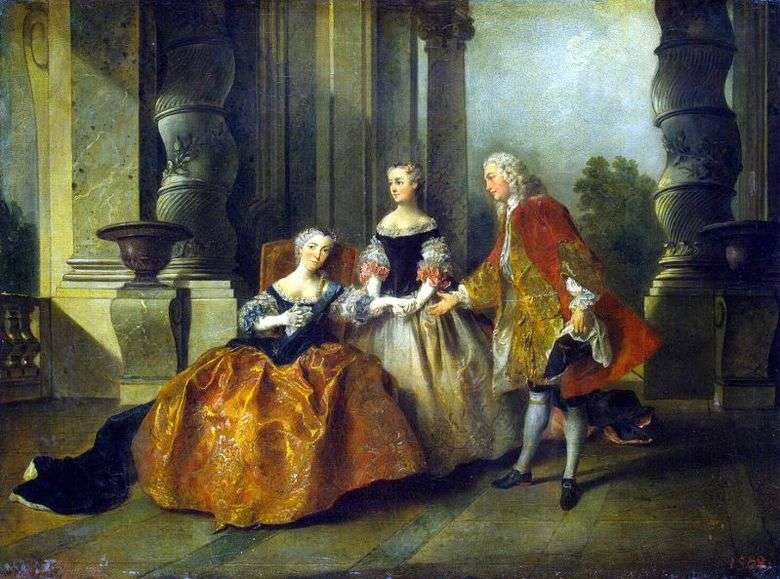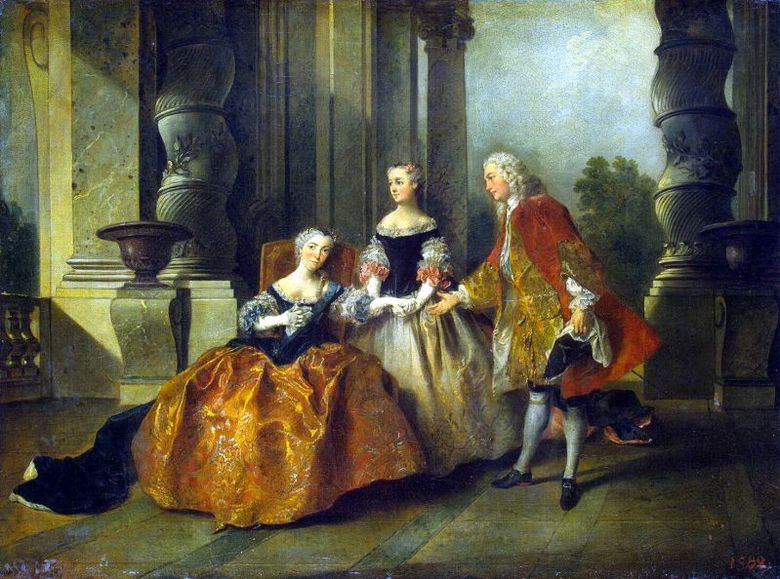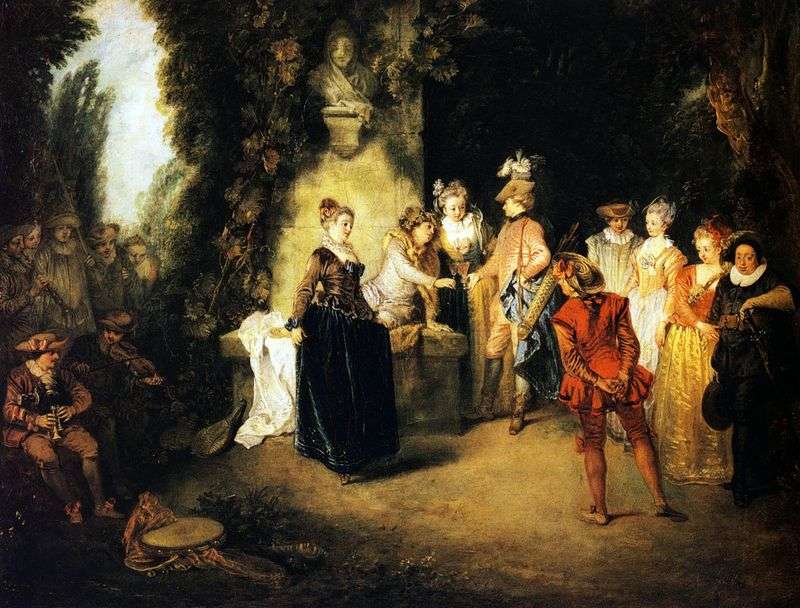
Painting by French painter Nicolas Lancre “A scene from the tragedy of Corneille.” The size of the painting is 41 x 56 cm, oil on canvas. Actually, the full name of the painting “A scene from the tragedy of Thomas Corneille,” Earl of Essex “.” Corneille Thomas, brother of Pierre Corneille, French playwright.
He was educated in a Jesuit school; was a lawyer at the Ruan Parliament, but left the service for the sake of literature and settled in Paris. Corneille wrote 42 plays for the theater, starting with imitations of Calderon in comedies: “Engagements du hasard”, “Le Feint Astrologue”, “Don Bertrand de Cigaral”, and continuing to write in the same fashionable then spirit of Spanish comedies intrigues. Such are the “L’amour a la Mode”, “Illustres Ennemis” and others. In 1656 his tragedy “Timocrate” was staged, which accounted for the greatest stage success of the century. The popularity of the tragedy is explained by the romance of its extremely complex plot. Of the further tragedies of Corneille, “Berenice”, “Darius et Stilicon”, “Camma et Pyrrhus”, “Antiochus”, “Mort d’Achille”, “Theodat”, and the tragedy of “Ariane” – Corneille’s masterpiece of simplicity and touching. Of the comedies he wrote at the time, they are given to “Don Cesar” d’Avalos, “L’Inconnu” and “Festin de Pierre”.
In addition, Corneille wrote the lyric operas “Psyche”, “Bellerophon”, “Medee” and many other plays of the most diverse nature. The dramatic works of Corneille reveal art in the conduct of the plot, the ability to diversify its incidents, but the manner of writing it is very colorless, rhetorical, far from the strength of his brother. The relationship of the brothers was very friendly; They were married to two sisters and they always lived together. Some critics argue that the glory of the great Pierre Corneille prevented the literary success of his brother; but much more reason to assume that the memory of Thomas Corneille was preserved precisely because of his relationship to Pierre Corneille.
The dramatic works of Corneille were published several times during the life of the author and appeared in full form under the title: “Poemes Dramatiques”. Corneille owns the translations of Ovid and “Histoire de la monarchie francaise sous le regne de Louis XIV”. As a member of the French Academy, Thomas Corneille took an active part in the work on the dictionary and, after the publication of the latter, published a two-volume supplement to it in 1694. He also published “Dictionnaire universel geographique et historique”. Thomas Corneille died almost in poverty.
 Escena de la tragedia de Corneille – Nicola Lancre
Escena de la tragedia de Corneille – Nicola Lancre Scène de la tragédie de Cornell – Nicola Lancre
Scène de la tragédie de Cornell – Nicola Lancre The scene of the French comedy by Jean Antoine Watteau
The scene of the French comedy by Jean Antoine Watteau French Comedy by Jean Antoine Watteau
French Comedy by Jean Antoine Watteau Self Portrait by Nicola Lancre
Self Portrait by Nicola Lancre Society in the park by Nicola Lancre
Society in the park by Nicola Lancre Lady and gentleman with two girls in the garden by Nicola Lancre
Lady and gentleman with two girls in the garden by Nicola Lancre Camargo Dancer by Nicola Lancre
Camargo Dancer by Nicola Lancre